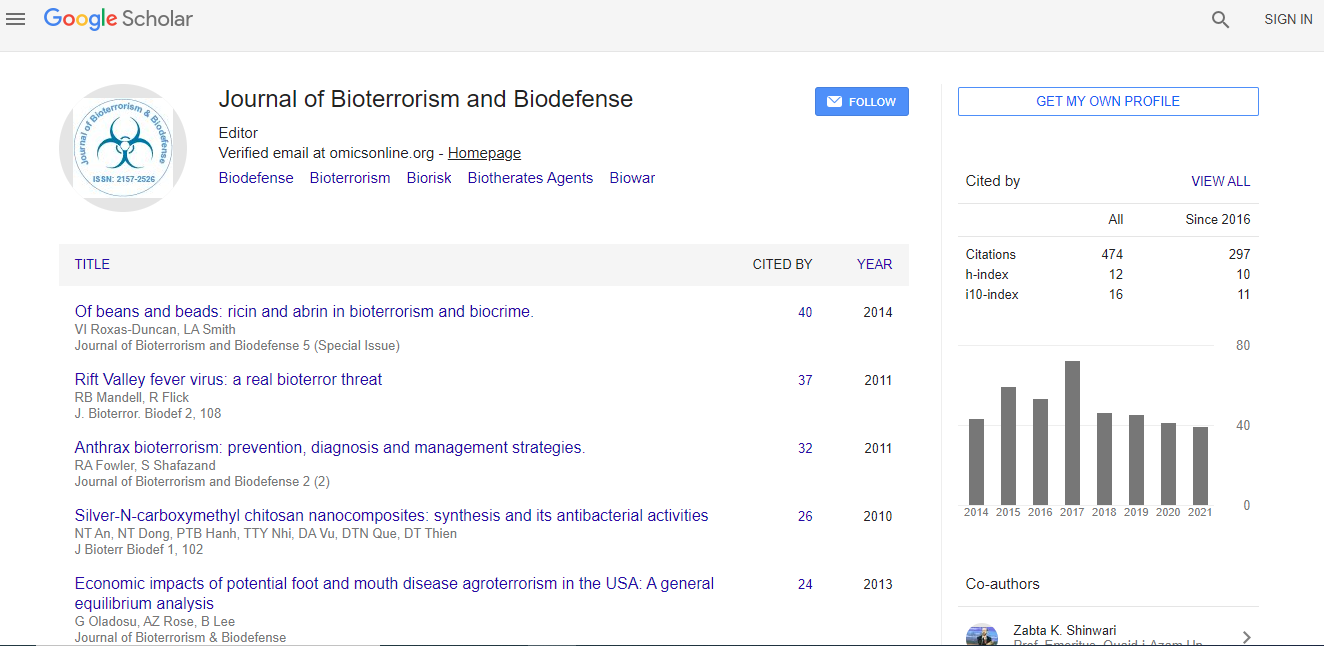Research Article
Flavin-Dependent Thymidylate Synthase as a Drug Target for Deadly Microbes: Mutational Study and a Strategy for Inhibitor Design
Irimpan I Mathews*
Stanford Synchrotron Radiation Lightsource, Stanford University, Menlo Park, CA 94025, USA
- *Corresponding Author:
- Irimpan I Mathews
Stanford Synchrotron Radiation Lightsource
Stanford University Menlo Park
CA 94025, USA
Tel: (650) 926 5105
Fax: (650) 926 2258/3292
E-mail: iimathew@slac.stanford.edu
Received Date: February 14, 2013; Accepted Date: April 18, 2013; Published Date: April 22, 2013
Citation: Mathews II (2013) Flavin-Dependent Thymidylate Synthase as a Drug Target for Deadly Microbes: Mutational Study and a Strategy for Inhibitor Design. J Bioterr Biodef S12:004.. doi: 10.4172/2157-2526.S12-004
Copyright: © 2013 Mathews II. This is an open-access article distributed under the terms of the Creative Commons Attribution License, which permits unrestricted use, distribution, and reproduction in any medium, provided the original authors and source are credited.
Abstract
The identification of flavin-dependent thymidylate synthase (FDTS) as an essential enzyme and its occurrence in several pathogenic microbes opens opportunities for using FDTS enzyme as an excellent target for new antimicrobial drug discovery. In contrast to the human thymidylate synthase enzyme that utilizes methylene-tetrahydrofolate (CH2H4 folate) for the conversion of dUMP to dTMP, the microbial enzymes utilize an additional non-covalently bound FAD molecule for the hydride transfer from NAD(P)H. The structural and mechanistic differences between the human and microbial enzymes present an attractive opportunity for the design of antimicrobial compounds specific for the pathogens. We have determined the crystal structure of FDTS enzyme in complex with the methyl donor, CH2H4 folate. We describe here the structure of a FDTS mutant and compare it with other FDTS complex structures, including a FDTS-CH2H4 folate complex. We identified a conformational change essential for substrate binding and propose a strategy for the design of FDTS specific inhibitors.

 Spanish
Spanish  Chinese
Chinese  Russian
Russian  German
German  French
French  Japanese
Japanese  Portuguese
Portuguese  Hindi
Hindi 